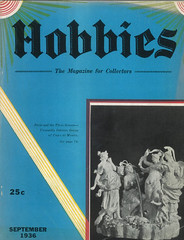
About UsThe Numismatic Bibliomania Society is a non-profit organization promoting numismatic literature. For more information please see our web site at coinbooks.org SubscriptionsThose wishing to become new E-Sylum subscribers (or wishing to Unsubscribe) can go to the following web page link MembershipThere is a membership application available on the web site Membership Application To join, print the application and return it with your check to the address printed on the application. Membership is only $15 to addresses in the U.S., $20 for First Class mail, and $25 elsewhere. For those without web access, write to: David M. Sundman, Secretary/TreasurerNumismatic Bibliomania
Society AsylumFor Asylum mailing address changes and other membership questions, contact David at this email address: dsundman@LittletonCoin.com SubmissionsTo submit items for publication in The E-Sylum, just Reply to this message, or write to the Editor at this address: whomren@coinlibrary.com
BUY THE BOOK BEFORE THE COINYou won't regret it! |
- WAYNE'S WORDS: THE E-SYLUM AUGUST 1, 2010
- KOLBE/FANNING NUMISMATIC LITERATURE SALES #117, #118
- NEW BOOK: GOLD! AT PIGEON ROOST
- NEW BOOK: STANDARD CATALOG OF WORLD COINS 2001-DATE, 5TH EDITION
- SPECIAL EDITION: FRIEDBERG'S PAPER MONEY OF UNITED STATES, 19TH EDITION
- LITERARY AWARDS FOR REED'S ABRAHAM LINCOLN BOOK
- ERIC NEWMAN DISCOVERS AUDUBON'S FIRST ENGRAVED ILLUSTRATION
- UNIDENTIFIED REPRINTS OF MARIS' COINS OF NEW JERSEY
- ANOTHER COIN BOOK WITH AN ENCASED COIN OR MEDAL
- SOME EDUCATIONAL HIGHLIGHTS OF THE ANA CONVENTION NUMISMATIC
- QUERY: RESEARCHER SEEKS HOBBIES MAGAZINE SET
- QUERY: AFFORDABLE LEATHER BOOKBINDING SERVICE SOUGHT
- 'THE MEDAL MAKER' VIDEO IS NOW ON THE INTERNET
- QUIZ ANSWER: WHY DO CHINESE CASH COINS HAVE HOLES?
- MORE ON COPYRIGHTS AND REPRINT PERMISSION
- DICK JOHNSON ON ELECTROTYPING IN AMERICA
- RON GUTH ON THE WILD RIDE OF NUMISMATIC RESEARCH
- OSTHEIMER COLLECTION RARITIES OFFERED
- MORE ON BANKNOTES FOR THE BLIND
- NOTES FROM E-SYLUM READERS: AUGUST 1, 2010
- FACEBOOK AND THE NUMISMATIC BIBLIOMANIA SOCIETY
- ORGANIZED CRIME AND THE 500 EURO BANKNOTE
- FEATURED WEB PAGE: THE ROCHESTER NUMISMATIC ASSOCIATION
WAYNE'S WORDS: THE E-SYLUM AUGUST 1, 2010

Among our new subscribers this week are Frank Ratts, Joe Kane, and J. Bartlett. Welcome aboard! We now have 1,364 subscribers.
This week we open with information on two upcoming sales from Kolbe & Fanning, and announcements of two new numismatic books. But the big news this week concerns my friend Eric Newman - he's gone and made (another) important numismatic discovery!
Other topics include reprints of Maris' Coins of New Jersey, bookbinders, copyrights, electrotyping and why Chinese cash coins have square holes. To learn about the Pigeon Roost Mining Company, Three-Onion Jam, organized crime and the 500 Euro note, and the murderer dressed as a sculptor, read on. Have a great week, everyone!
Wayne Homren
Numismatic Bibliomania Society
KOLBE/FANNING NUMISMATIC LITERATURE SALES #117, #118
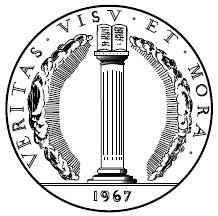 During September of this year, Kolbe & Fanning Numismatic Booksellers will conduct two notable auction sales. The first, closing on September 12th, 2010, is comprised of the collection of early printed numismatic books formed by the late Anders Frösell of Sweden. Forty-eight works are featured, dating from the early 1500s to the late 1700s, with over half dated before 1600. Condition covers the spectrum, allowing numismatists on modest budgets the infrequent opportunity to add a work to their libraries dating from the cradle period of numismatic printing.
During September of this year, Kolbe & Fanning Numismatic Booksellers will conduct two notable auction sales. The first, closing on September 12th, 2010, is comprised of the collection of early printed numismatic books formed by the late Anders Frösell of Sweden. Forty-eight works are featured, dating from the early 1500s to the late 1700s, with over half dated before 1600. Condition covers the spectrum, allowing numismatists on modest budgets the infrequent opportunity to add a work to their libraries dating from the cradle period of numismatic printing.
The roster of famous early numismatic authors represented in the sale includes Father Augustín, Anselmo Banduri, Guillaume du Choul, Sebastian Erizzo, Hubert Goltz, Johann Huttich, Adolph Occo, Fulvio Orsini, Onuphrio Panvinio, Charles Patin, Guillaume Rouille, Johann Sambucus, Ezechiel Spanheim, Jacob de Strada, Gabriel Simeoni, Jean Foy-Vaillant, Aenea Vico and others.
The second sale, closing four days later, on September 16th, features the outstanding and extensive numismatic library formed by the well-known ancient coin dealer, auctioneer and numismatic photographer Robert J. Myers. Devoted to works on ancient coins, art and antiquities, the 108-page catalogue of the Myers library features over 1300 lots. It is comprehensive in its coverage of ancient Greek numismatics, and also features a wealth of important reference books on Roman coins and ancient art.
Included among the truly important and often quite rare works in the Myers library are: a set of the Numismatic Chronicle, largely complete from 1881 to 2009; an attractive set of Mionnet's sixteen volume 1806-37 classic Médailles Antiques, Grecques et Romaines; many rarely offered numismatic excavation reports, among them all of the Olynthus volumes featuring coins (and virtually all of the other volumes in that series), including a fine example of Robinson and Clement's The Chalcidic Mint; a fine original set of the famous Jameson collection; original sets of the McClean, Hunterian and Weber collections; a comprehensive collection of Sylloge Nummorum Graecorum volumes; seldom encountered classic die studies such as Herzfelder on Rhegium, Ravel's Vlasto on Tarentum, Regling on Terina, Boehringer on Syracuse, Calciati on Sicily, Imhoof-Blumer's Antiken Nord-Griechenlands, May on Ainos, Calciati's Pegasi on Corinth, Ravel on Corinth, Svoronos on Athens, Seltman on Olympia, Le Rider and Svoronos on Crete, Waddington on Asia Minor, Cahn on Knidos, Lederer on Nagidos, Naville on Cyrene and Svoronos on the Ptolemies.
Classic works on Roman coins include Mazzini and Robertson on the Hunter collection; a complete set of the series by Bastien and others of Numismatique Romaine; C.H.V. Sutherland's set of Alföldi on contorniates; Burnett on Roman Provincials; and a fine original Dattari. The extensive selection of auction catalogues featuring ancient coins is perhaps highlighted by the first twelve fixed price and auction sale catalogues issued by Jacob Hirsch, one of the most notable ancient coin dealers of all time. All are Hirsh's unique annotated sales copies, generally recording information about the coins in the sales and the collectors who acquired them that may be found nowhere else.
Among other key auctions catalogues in the sale are all of Hirsch's Ars Classica sales devoted to ancient coins; his other key ancient coin and medal sales, including Rhousopoulos, Weber I & II, and Löbbecke on medals; a nearly complete set of Leu ancient coin sales, 1971-2009; and classic sales by Cahn, Egger, Florange, Ciani, Hamburger, Helbing, Adolph Hess, Münzhandlung Basel, Santamaria, Sotheby's and many others.
The sale even features a few works of interest to collectors of American coins, among them the famous 1746 series of plates depicting the monumental collection formed by Thomas Pembroke, which features the first printed illustrations of American colonial coins. Another volume in the sale, a Sammelband found in the section of works on medals, features the famous essay by Rev. Henry Christmas on Copper Coinage of the British Colonies in America. Also bound in this rather fascinating volume is Aquila Smith's rare tract on Irish tradesmen's tokens and Richard Sainthill's Defence of the British School of Medal Engravings.
Also included is a nice collection of standard works on historical medals and selected titles on medieval and early modern coins. The sale concludes with three coin cabinets.
Among the wealth of classic and standard works on the art, archaeology, antiquities and history of the ancient world featured in the sale, to name but a few, are: a significant run of Antike Kunst; most of Princeton's volumes on the Athenian Agora and, as previously noted, the Olynthus series spearheaded by David M. Robinson; two early 19th-century volumes of engravings of important antiquities in the Museo Reale Borbonico collection; Furtwängler's 1895 Masterpieces of Greek Sculpture, one of 50 on vellum; Stuart Jones's very rare original two-volume work on ancient sculptures in the Museo Capitolino collection; Gisela Richter's 1965 three-volume Portraits of the Greeks; Beazley's 1954-63 Attic Vase Paintings in the Museum of Fine Arts, Boston; Trendall on the vases of Lucania, Campania and Sicily with all three supplements; Trendall and Cambitoglou's 1978-82 work on Apulia; fifty-eight volumes in the Corpus Vasorum Antiquorum series; and classic works on cylinder seals and gemstones, including works written by Brandt, Eisen, Osten, Richter, Vollenreider, Zwierlein-Diehl and others. A Handsome, 17th-century "subscription copy" of John Dryden's Works of Virgil published by Jacob Tonson may also be found among the well over 300 lots to be found in this section of the catalogue.
Printed catalogues of both sales may be obtained by sending $25 to: KOLBE & FANNING LLC, NUMISMATIC BOOKSELLERS, 141 W JOHNSTOWN ROAD, GAHANNA OH 43230-2700.
The catalogues are also accessible free of charge on the Kolbe & Fanning website at www.numislit.com. Present only there are color illustrations of all of the antiquarian works in the Frösell library.
On November 18, the firm will be conducting mail-bid Auction Sale 119, for which consignments are still being accepted. On January 8, 2011, Kolbe & Fanning will be holding a public auction at the Waldorf-Astoria hotel in conjunction with the New York International Numismatic Convention. Select consignments of important numismatic works are currently being solicited for this sale. Queries may be directed to David F. Fanning at df@numislit.com, (614) 414-0855, or to George F. Kolbe at gfk@numislit.com, (909) 338-6527. Kolbe & Fanning will also have a bourse table at the upcoming ANA convention in Boston and both look forward to visiting with old friends and meeting new ones.
NEW BOOK: GOLD! AT PIGEON ROOST
 Any book on aspects of the early history of mining in Georgia would be remiss to leave out the background surrounding the events leading up to the formation of the Pigeon Roost Mining Company.
Any book on aspects of the early history of mining in Georgia would be remiss to leave out the background surrounding the events leading up to the formation of the Pigeon Roost Mining Company.
The story of the Pigeon Roost Mining Company is intimately interwoven with that of the Bank of Darien and the Belfast Mining Company, all three of which issued their own scrip or paper money. In fact, the Pigeon Roost scrip is in all probability a direct product of the Darien Bank. This book will unravel that complex story step by step.
The Pigeon Roost Mining Company has long held interest with bank note collectors because of the fancy scrip issued by that company in the mid 1830's. Not much has been published on the company. As I researched the company over the past two years, I quickly became deeply entangled with the Georgia gold rush, and the development of the mines there, much of which started with or at the Pigeon Roost.
Over time, I enquired about American mining scrip as a whole, and it soon appeared that the Pigeon Roost Mining Company scrip was, in fact, the first known gold mining scrip issued in America. It is an integral and important part of America's first Gold Rush, and a symbol of the harsh banking conditions of the times. It precedes any scrip from the coal mines of the east, iron mines of the north, and gold mines of the Appalachians. As such, it is deserving of a better story than what has been told, if one could be found.
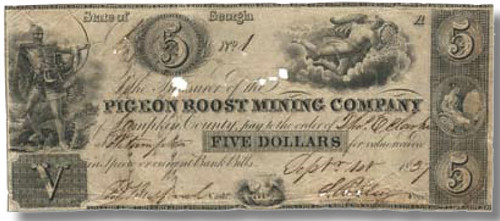
This book was written by Fred N. Holabird with help from Al Adams, who made the entire project possible by his generous, unlimited access to his massive and wonderful Georgia Gold Rush Memorabilia Collection. The authors would like to thank and show appreciation to David Marsh, Mack Martin and Carl Anderson for their work to promote interest and understanding of Georgia Scrip.
NEW BOOK: STANDARD CATALOG OF WORLD COINS 2001-DATE, 5TH EDITION
 The fifth edition of the Standard Catalog of World Coins 2001-Date is now available from Krause Publications.
The fifth edition of the Standard Catalog of World Coins 2001-Date is now available from Krause Publications.
Valuable coin data, gathered by a panel of more than 200 coin experts worldwide, fill the pages of this new edition, which contains nearly 100 more pages than the previous edition.
"In putting together this book we scoured mint websites, live auction sites, and special new issue sales sites," said market analyst Tom Michael. "That's why this edition is 20 percent larger than the last one!"
Hundreds of new world mint issues, including the ultra-popular area of bullion coins, are represented in authoritative Standard Catalog fashion, complete with key coin specifications, background about each country's monetary history, and 6,000 actual-size coin illustrations. The reference includes coverage of collector coins, sets, trial strikes, pieforts and patterns.
Editor George S. Cuhaj is a 16-year veteran of Krause Publications' Numismatic Catalog Division, where he is also the editor of the Standard Catalog of® World Coins series. Cuhaj hails from New York City, where he was previously on staff with the American Numismatic Society, Stack's Rare Coins and R.M. Smythe & Co. He is a frequent instructor at the American Numismatic Association's Summer Seminars.
Market Analyst Tom Michael serves as market analyst for Krause Publications coin catalogs, and has done so for more than 90 world and U.S. coin catalogs. He has more than 20 years of experience researching and reporting on world coin prices and market trends.
For more information, see:
www.shopnumismaster.com/product/2011-standard-catalog
-of-world-coins-2001-date/world-coins
THE BOOK BAZARRE
A FEW UPCOMING SEPTEMBER 12, 2010 AUCTION HIGHLIGHTS
- Goltz's 1563 Julius Caesar Printed on "Grand Italian Paper"
- Huttich's 1534 Lives of the Caesars, Complete with the Elenchus
- Two Sets of Banduri's 1718 Numismata Imperatorum Romanorum
- The 1756 First Edition of Maria Theresa's Monnoies en Argent Cabinet
- A Unique Volume of Foil Impressions of Over 500 European Coins
(614) 414-0855 • df@numislit.com • GFK@numislit.com
SPECIAL EDITION: FRIEDBERG'S PAPER MONEY OF UNITED STATES, 19TH EDITION
Doug Mudd of the American Numismatic Association writes:
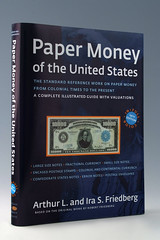 With regards to the discussion of the 19th edition of The Paper Money of the United States; Art Friedberg did get John Nebel's superb images of the Bebee notes, among others from the ANA collection.
With regards to the discussion of the 19th edition of The Paper Money of the United States; Art Friedberg did get John Nebel's superb images of the Bebee notes, among others from the ANA collection.
The special edition books (signed by both authors) are going to be on sale at Boston in the Museum Showcase area for $80 (including tax) right next to the Bebee display which is going to be there as well. If anyone wants a specific numbered edition (other than the first three), you can get it for an extra $15. Art will be available for personalized autographs Thursday through Saturday at times that will be posted in the Museum Showcase area.
To read the earlier E-Sylum article, see: NEW BOOK: FRIEDBERG'S PAPER MONEY OF UNITED STATES, 19TH EDITION (www.coinbooks.org/esylum_v13n30a02.html)
LITERARY AWARDS FOR REED'S ABRAHAM LINCOLN BOOK
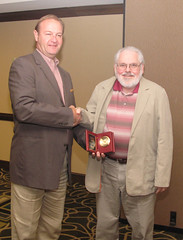 Fred Reed's Abraham Lincoln: The Image of His Greatness has added a third literary award to its roster. The Society of Paper Money Collectors bestowed its D.C. Wismer "Book of the Year" Award at its annual gathering in Memphis.
Fred Reed's Abraham Lincoln: The Image of His Greatness has added a third literary award to its roster. The Society of Paper Money Collectors bestowed its D.C. Wismer "Book of the Year" Award at its annual gathering in Memphis.
The book had previously been named the Numismatic Literary Guild's 2009 "Book of the Year" (the work most likely to have an impact on numismatics), and it earned the Professional Currency Dealers Association's 2009 Literary Award. It also was an Invited Candidate for The Lincoln Group of New York's annual Award of Achievement—a rare honor highly prized in Lincoln-research circles.
Reed, a noted numismatic researcher and writer, is the longtime editor of Paper Money Magazine. He writes a weekly column for Coin World and monthly columns for Bank Note Reporter and COINS Magazine.
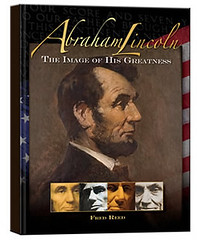 In Abraham Lincoln: The Image of His Greatness, Reed explores the ever-changing popular depiction of Lincoln as "ideal, idol, and icon." The martyred president is seen on coins, tokens, medals, stamps, stocks, bonds, and paper money—and also in paintings, magazine covers, advertisements, cartoons, movie stills, and other diverse media.
In Abraham Lincoln: The Image of His Greatness, Reed explores the ever-changing popular depiction of Lincoln as "ideal, idol, and icon." The martyred president is seen on coins, tokens, medals, stamps, stocks, bonds, and paper money—and also in paintings, magazine covers, advertisements, cartoons, movie stills, and other diverse media.
The book has been praised by mainstream historians, Lincoln scholars, and numismatic researchers alike, and has been a popular seller for Whitman Publishing.
"Fred Reed's history is beautifully illustrated with materials from his own extensive collection," said Whitman publisher Dennis Tucker. "He shares more than 900 images, famous and obscure-many rarely seen, and some never before published. They offer fresh and illuminating insight on our greatest president."
Abraham Lincoln: The Image of His Greatness is available online (including at WhitmanBooks.com), and from booksellers and hobby dealers nationwide. The hardcover 8.5x11-inch book has 288 pages and is illustrated in full color. It retails for $29.95.
THE BOOK BAZARRE
ERIC NEWMAN DISCOVERS AUDUBON'S FIRST ENGRAVED ILLUSTRATION
I've quoted extensively from the Inquirer article. The images are of Audubon himself, and Audubon's first engraved illustration, a grouse. -Editor
For more than half a century, scholars and biographers of famed bird artist and ornithologist John James Audubon had been stumped.
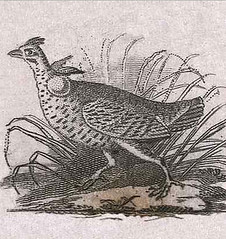 In an 1824 diary entry, the young French immigrant, who lived for several years at Mill Grove in Montgomery County, mentioned that he had given a drawing of a running grouse to a Philadelphia engraver for use on a New Jersey banknote.
In an 1824 diary entry, the young French immigrant, who lived for several years at Mill Grove in Montgomery County, mentioned that he had given a drawing of a running grouse to a Philadelphia engraver for use on a New Jersey banknote.
It would have been a key moment - the first published illustration for the struggling artist, then 29 years old.
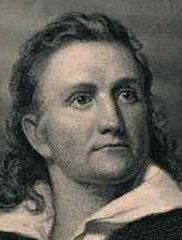 But if so, where was it? Nobody could find it. And as time went by, many began to dismiss the story as a typical Audubon exaggeration.
But if so, where was it? Nobody could find it. And as time went by, many began to dismiss the story as a typical Audubon exaggeration.
But Robert Peck, curator of art and artifacts at the Academy of Natural Sciences, decided to give it one last try.
What he and Eric Newman, a numismatic historian from St. Louis, found has rocked the world of Audubon scholars, who are calling their discovery "a eureka moment."
Their quest began about a decade ago, when Newman visited the academy as part of a tour of libraries and important collections. He and Peck met. They had lunch.
A year later, Peck wrote to him. Had Newman ever seen a New Jersey banknote with a bird on it?
Newman was an expert on the early paper currency of America and had written a definitive work on the subject. He didn't know of any, but he began looking.
On a trip to Chicago, Peck checked another diary, and found an entry from 1826. Audubon was in England, where his landmark book, The Birds of America, with full-size printings of his bird watercolors, was eventually produced, beginning in 1827.
He noted that he presented a friend "with a copy of Fairman's Engraving of [my] Bank Note Plate."
But had the money ever been printed? Or was it a plate that never got used?
Newman combed through every book written on New Jersey paper money. "That didn't help me at all," he said.
Then he checked the 10,000 different banknotes issued in the United States for grouse pictures. "I couldn't find any."
Finally, he reexamined his own collection of "sample sheets," printed with various images that bank presidents might want on their bills.
Mostly, such sheets contain portraits of George Washington and Thomas Jefferson, images of draped Lady Liberties, and, above all, eagles.
But finally, on a sheet issued by Fairman's firm, likely in 1825 - there! on the lower right! - was a grouse.
As was typical, the image wasn't signed. But while other wildlife artists of the day were producing static images, this had unmistakable Audubon touches - the unusual choice of species, the running posture that revealed a knowledge of the bird in the field, and hints of its grassy habitat.
"All the circumstantial evidence lines up," Peck said. "He writes in diary twice he did this drawing for Fairman. And that it was of a grouse. And that it was for a New Jersey banknote.
"And here, suddenly within months of Audubon saying he gave it to Fairman, the grouse appears on one of Fairman's sample sheets."
More searches led to more tidbits.
Eventually, Peck and Newman put together a likely scenario: Bills may have been printed for the New Jersey institution, the State Bank at Trenton, which employed Fairman's firm to design and print many of its bills.
But the bank began to fail in July 1825, and its notes were worthless by 1826.
The Camden bank eventually recalled its currency and burned it along with bills from the Trenton bank.
"The failure and scandal . . . all that is documented as part of banking history," Peck said. Whether the burned notes actually contained Audubon's grouse is likely, given the timing, he said, but unproven.
Peck and Newman also found later designs with Audubon's grouse - a $3 note for the Bank of Norwalk in Ohio and a $5 note for the Bridgeport Bank in Connecticut. But there's no evidence that either bank followed through and printed the bills.
The academy announced Peck and Newman's findings Thursday. They're being published in the fall journal of the Society of Historians of the Early American Republic, based at the Library Company of Philadelphia.
As word got out, scholars began calling with congratulations - and more tidbits.
"It's been one of the holy grails for Audubon researchers, to find out if that exists," said Nancy Powell, curator of collections and exhibitions at Mill Grove. Now, "it lets us know a little more about him and his art and how he developed it."
"It's the eureka moment where you find that missing piece of the puzzle," said Roberta Olson, curator of drawings at the New York Historical Society.
The society has all 435 original watercolors for Audubon's Birds of America. One is of a similar grouse - the pinnated grouse - and the society dates it to 1824, the same year Audubon supposedly made the image for Fairman.
Peck and Newman know they may never learn the whole story. So much is gone.
But neither Peck nor Newman can resist the tantalizing possibility that banknotes with Audubon's grouse on them were printed and still exist . . . somewhere.
Given the Trenton and Camden bank connections, they can't help but imagine some tucked away in a Philadelphia attic or stuffed into a Camden wall for insulation.
"That is always possible," Newman said. "Always."
To read the complete article, see:
Eureka! Audubon's first engraved illustration discovered
(www.philly.com/inquirer/local/20100730_Eureka__
Audubon_s_first_engraved_illustration_discovered.html?viewAll=y)
Retired St. Louis businessman and philanthropist Eric Newman has taken part in one of the greatest historical "finds" of late: John James Audubon's first published illustration of a bird.
Robert Peck, curator of art at the Academy of Natural Sciences, told the Business Journal he met Newman 10 years ago when the St. Louisan was visiting Philadelphia museums. On learning of Newman's expertise, Peck enlisted him to join in the search for the early Audubon sketch.
Newman suggested following the work of period engravers. As it turned out, Audubon had given his sketch of a heath hen, a now-extinct species of prairie chicken, to bank note engraver Gideon Fairman to try to sell his artwork.
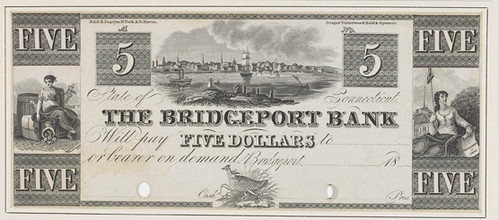
The two researchers began looking at proof sheets Fairman had done for bank clients, and found the sketch on proof bank notes made for at least two independent banks in Connecticut and Ohio.
The proofs were in Newman's own collection, Peck said.

Newman said several of the items are on display at the Newman Money Museum, housed in the Mildred Lane Kemper Art Museum at Washington University in St. Louis.
Newman, now 99, retired about 1985 as secretary and general counsel of St. Louis-based shoe and apparel retailer Edison Bros. Stores Inc.
He began researching and speaking on the history of money as a young teen, and "I've been writing on the history of American money for 80 years," he told the Business Journal. "I have a lot of fun doing it."
In 1958, he founded the Eric P. Newman Numismatic Education Society. Newman has published more than 100 articles, monographs and books on the topic, he said. Newman said he doesn't charge for his research.
To read the complete article, see:
Numismatist Newman makes Audubon find
(www.bizjournals.com/stlouis/blog/2010/07/
numismatist_newman_makes_audubon_find.html)
The discovery in and of itself is intriguing - but what makes it more so is Newman's age - he's 99.
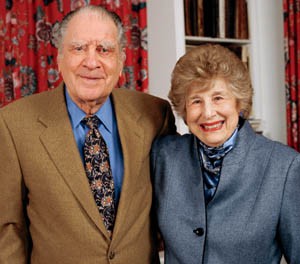
Newman is a St. Louisan whose many publications include a book on Early American paper money that is considered the standard in the field. He also has one of the finest private collections of U.S., and Colonial American coins and paper money and his gift to Washington University established the Newman Money Museum.
Newman and his wife, Evelyn Newman, 90, are at their summer home in Martha's Vineyard so their son Andy Newman, of St. Louis, answered a few questions on his father's behalf.
"He's not doing anything to celebrate," Andy said. "Solving numismatic mysteries is my dad's passion. He tells me he has more in the pipeline."
Andy said his father recently finished work on the fifth edition of his book about Early American paper money. While Andy was putting away some of the material he said his father stopped him and said, " 'Don't put that away. I'm working on the sixth edition.' "
To read the complete article, see: Local numismatic scholar Eric Newman's discovery of an Audubon etching has set the scholarly world afire (www.stltoday.com/news/local/columns/deb-peterson/article_0cf6c798-9c29-11df-9a25-0017a4a78c22.html)
UNIDENTIFIED REPRINTS OF MARIS' COINS OF NEW JERSEY
There are two reprints of Maris' The Coins of New Jersey for which more information is needed - a 1925 edition and a 1962 edition. Ray Williams provided an image for the 1962 version for the NBS Numismatic Bibliography project. Thanks!
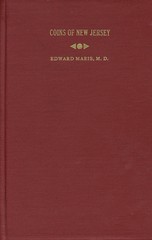

To read the complete NBS bibliography entry, see: A Historic Sketch Of The Coins Of New Jersey (wiki.coinbooks.org/index.php/A_Historic_Sketch_Of_The_Coins_Of_New_Jersey)
ANOTHER COIN BOOK WITH AN ENCASED COIN OR MEDAL
Cindy Wibker writes:
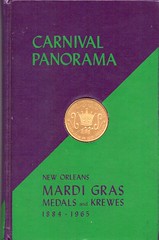 Regarding numismatic literature with a coin or medal mounted, I have a book entitled "Carnival Panorama, New Orleans Mardi Gras Medals and Krewes 1884-1965" by Jay Guren and Richard Ugan. It was published by Anderson Publications, New Orleans, 1966. The front cover of the book has a 1 5/8" round opening, and mounted on the inside front page (showing through the opening in the front cover) is a golden aluminum medal. It is the 1966 New Orleans Carnival Parade Schedule Medal and was available exclusively to purchasers of the book.
Regarding numismatic literature with a coin or medal mounted, I have a book entitled "Carnival Panorama, New Orleans Mardi Gras Medals and Krewes 1884-1965" by Jay Guren and Richard Ugan. It was published by Anderson Publications, New Orleans, 1966. The front cover of the book has a 1 5/8" round opening, and mounted on the inside front page (showing through the opening in the front cover) is a golden aluminum medal. It is the 1966 New Orleans Carnival Parade Schedule Medal and was available exclusively to purchasers of the book.
To read the earlier E-Sylum article, see: QUERY: COIN BOOKS WITH AN ENCASED COIN OR MEDAL (www.coinbooks.org/esylum_v13n30a09.html)
SOME EDUCATIONAL HIGHLIGHTS OF THE ANA CONVENTION NUMISMATIC
Len Augsburger writes:
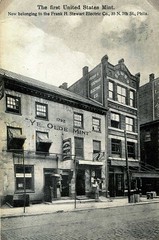 The ANA Convention Numismatic Theater schedule includes a first Mint doubleheader. Joel Orosz and I will be presenting "Pictures of the First United States Mint" at 2pm, Friday, 8/13, in Room 209.
The ANA Convention Numismatic Theater schedule includes a first Mint doubleheader. Joel Orosz and I will be presenting "Pictures of the First United States Mint" at 2pm, Friday, 8/13, in Room 209.
Following at 3pm in the same room will be a two-hour panel discussion on "The Development and Use of the Screw Press for Coin Production," led by Brad Karoleff, which will discuss different aspects of early minting technology in the United States.
Panel participants will be Messrs. Dannreuther, Doty, Eckberg, Julian, Mudd, and Sholley - an all-star panel if there ever was one. Joel and I will have the rare luxury of deferring any hard questions to the following session!
The full schedule is at:
www.worldsfairofmoney.com/assets/files/ShowFloorDealers
/Complete%20Schedule%20BOS%2008102010%20FINAL%20071310.pdf
Join us for lunch during the Sundman Lecture presentations at the ANA World's Fair of Money in Boston.
August 12, 12:15 – 1:45 PM AT THE HYNE S CONVENTION CENTER, BOSTON
Meet Sundman Lecture Series presenters Peter Huntoon, Max Spiegel, Richard Doty and Erik Goldstein, and celebrate New England numismatics and the hobby's premier lecture program at this specially catered gourmet luncheon. Reservations required.
Menu Selection #1: Chicken Roulade stuffed with a Mushroom Duxelles, Goat Cheese and Roasted Yellow Peppers accompanied by Rice Pilaf with Baby Currents and Lemon Scented Asparagus
Menu Selection #2: Pepper-Crusted Sliced New York Sirloin topped with Three-Onion Jam alongside Horseradish & Chive Mashed Potatoes and Yellow & Green Bean Duet
All entrees accompanied by Fresh Rolls & Butter, Salad, Dessert, Iced Tea & Premium Blend Coffee (Vegetarian selection available on request.)

Questions? Contact us ... 719-482-9857
convention@money.org
Register by phone ... 719-482-9857
QUERY: RESEARCHER SEEKS HOBBIES MAGAZINE SET
I've been following the posts about Hobbies Magazine with interest. I was searching for a set of this publication while researching my coin board book and would still be interested for the sake of researching my folder/album book currently in preparation. I was disappointed to learn that the ANA's Library didn't have a set, but I can see where it's only peripherally related to numismatics.
My interest lies in the fact that this was just the sort of generalist, entry-level publication that may have appealed to the 1930s-40s generation of new coin collectors who discovered that activity through boards and folders. It may be that ads or announcements for such products were included in its pages, as well as some mention from columnists and other contributors.
I'd like to know where there may be an accessible set of Hobbies Magazine. I'd also like to know how long it was in publication. I believe it began in 1933, but I've never seen a termination date. My guess would be sometime during the 1960s-70s, but I would appreciate assistance from the readers.
QUERY: AFFORDABLE LEATHER BOOKBINDING SERVICE SOUGHT
Bill Eckberg writes:
I want to have bound a set of reprints of articles (a couple hundred total pages) and possibly a small numismatic catalog of 64 pages. Can anyone recommend someone who can bind them in leather and wouldn't charge an arm and a leg?
To read the complete article, see: BOOKBINDER RECOMMENDATIONS (www.coinbooks.org/esylum_v09n04a16.html)
'THE MEDAL MAKER' VIDEO IS NOW ON THE INTERNET
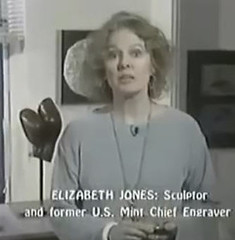 Medallic Art Company has placed "The Medal Maker" on its web site in four parts. The 1997 video features master medallist Laura Gardin Fraser and was filmed by Hollywood film producer Michael Craven. It was narrated by Elizabeth Jones, former U.S. Mint Chief Engraver.
Medallic Art Company has placed "The Medal Maker" on its web site in four parts. The 1997 video features master medallist Laura Gardin Fraser and was filmed by Hollywood film producer Michael Craven. It was narrated by Elizabeth Jones, former U.S. Mint Chief Engraver.
The script for the 30-minute video was written by Dick Johnson, a frequent contributor to The E-Sylum. It is a recasting of a 1929 black-and-white film which shows Laura Fraser creating a model for a medal of the National Sculpture Society, their Special Medal of Honor. It takes the viewer through every step from preparing a background plate to the critical review of the finished medal by five of her sculptural peers. This occurred on the occasion of the first presentation of the medal to Daniel Chester French in 1930 -- one of the five artists was her own husband, James Earle Fraser, both accomplished coin and medal sculptors.
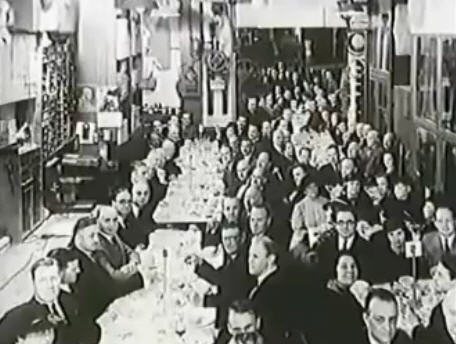
The portion displaying Elizabeth Jones' narration is in color, of course, but segments flash back in black-and-white to an occasion in April 1937 when Medallic Art Company first showed the film to members of the National Sculpture Society. The company sent out invitations with the hope that two dozen would accept, but 75 sculptor-members showed up. After the film was shown a sit-down dinner was given and a photograph was taken in the tiny shop where equipment was shoved aside to make room for all the guests and dinner tables.
But the event didn't end peaceably that night. A woman was murdered several blocks away in New York that very day and a witness said the murderer was dressed as a sculptor. Although none of the guests were dressed in their work smocks, New York City police had to interview every guest in attendance!
The 1929 film was once thought lost, company officials had forgotten they had sent a copy of the film to the numismatic department of the Smithsonian Institution. Film maker Mike Craven found it in a closet of Elvira Clain-Stefanelli, head of the department at the time.
Craven persuaded Johnson to write the script and Elizabeth Jones to narrate. The filming took place in Jones' studio, in Philadelphia at the time. The recasting of the film eliminated title cards of the original 16-minute silent film, which were unnecessary with Jones narration.
The video has proved useful since its 1997 release, particularly to sculptor medallists who like viewing the technique Laura Fraser employed for her modeling at the time.
The video may be viewed at the following web site: www.youtube.com/view_play_list?p=A69802FB6478AB3B
Michael Craven's life ended in tragedy. He was killed in a road-rage incident, reported here on E-Sylum at: www.coinbooks.org/esylum_v03n19a03.html
QUIZ ANSWER: WHY DO CHINESE CASH COINS HAVE HOLES?
Last week I asked, " Why do Chinese cash coins have SQUARE holes in them?". Pete Smith writes:
I've heard one explanation for the square holes on Chinese Cash coins but it may not be the only explanation. Cash coins were cast and there was excess metal around the edges of the molds and also from the sprues where metal flowed into the molds. After casting, the coins were strung on a square rod. The round extra metal could then be filed off each group of coins. The square rod prevented the coins from turning as they were being filed.
 Bob Leonard writes:
Bob Leonard writes:
The answer to this question can be found on p. 102 of my new book, Curious Currency: "the holes were made square for ease in taking the casting flash off the edge; a square rod through the center kept the coin from shifting during filing." My authority for this statement is Doty's Money of the World, p. 53.
MORE ON COPYRIGHTS AND REPRINT PERMISSION
Last week Dick Hanscom had a question about copyrights and reprint permission for numismatic authors. Ben Keele writes:
I agree with Wayne's thoughts about the scope of permission. That is, if permission is given for a newsletter, it probably would not extend to another newsletter or book. A compilation of the newsletters strikes me as within a permission for a newsletter. When asking for or giving copyright permissions, it is prudent to do it in writing and be specific and clear about the scope of permission.
If you cannot find the copyright owner, then it might be what is called an orphan work (see http://www.copyright.gov/orphan/, http://en.wikipedia.org/wiki/Orphan_works, and http://www.publicknowledge.org/issues/ow for more information about orphan works).
There is no easy solution for the orphan works problem yet. One way to work reduce or avoid the problem is to look for Creative Commons-licensed works or, if you are comfortable with it, adding such licenses to your own works. Giving permission in advance in this way means the work could be used, even if the copyright holder cannot be found. More information on Creative Commons licenses can be found at www.creativecommons.org or in my Numismatist article from a few months ago.
To read the earlier E-Sylum article, see: COPYRIGHTS AND REPRINT PERMISSION: WHERE AND FOR HOW LONG? (www.coinbooks.org/esylum_v13n30a14.html)
DICK JOHNSON ON ELECTROTYPING IN AMERICA
So little is known about electrolytic casting by American numismatists, yet it is so important in coin and medal technology. Recent comments in The E-Sylum about the British electrotyper, Robert Cooper Ready, has brought this to mind.
Electrolytic casting was used by the U.S. Mint since 1851(after Franklin Peale's first experiments as early as 1842). It was in use at the Philadelphia Mint for making coin and medal models for over a century (until gradually replaced by an epoxy method developed for World War II).
Did that statement sink in? All U.S. coins made 1851 to 1951 were created with the use of an electrolytic cast pattern. It is that important! Yet, most numismatists think of electrotyping only as a method of making easy counterfeits. They have so much to learn.
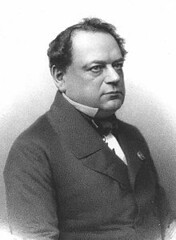 Based on the early works of three Italians, a German physicist and engineer working in St Petersburg, Moritz Herman Jacobi (1801-1874), developed the electrolytic process he called "galvanoplasty" (which today we call electrolysis). This is the use of a low voltage current to carry small particles of metal from one source (anode) to deposit on another surface (cathode).
Based on the early works of three Italians, a German physicist and engineer working in St Petersburg, Moritz Herman Jacobi (1801-1874), developed the electrolytic process he called "galvanoplasty" (which today we call electrolysis). This is the use of a low voltage current to carry small particles of metal from one source (anode) to deposit on another surface (cathode).
This is the concept of electroplating. With the use of a core mandrel the process can make relief forms. This is called electroforming.
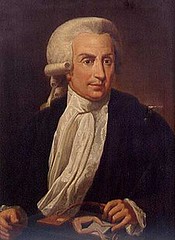 An oversize casting made by electroforming is the pattern for one side of a coin or medal. This is called a galvano. The word is named after one of those early Italians, Luigi Galvani (1745-1798), who first observed electric current.
An oversize casting made by electroforming is the pattern for one side of a coin or medal. This is called a galvano. The word is named after one of those early Italians, Luigi Galvani (1745-1798), who first observed electric current.
A model is made by an artist in clay, wax or plaster. Soft material is copied into plaster to serve as the core mandrel. This is placed into an electrolysis tank and the current is turned on. A complete electric circuit must be formed, from the electric source to the anode, through the electrolysis solution on to the mandrel and back to the source.
In early days primitive batteries were used for that electric current. This continued until Thomas Edison gave us commercial electricity in 1889.
Back in England, in 1840, two cousins, George and Henry Elkington, improved on Jacobi's process and developed electroplating. They received a patent for silverplating, depositing silver on base metal. This is what Ready learned of to make his electrotypes at the British Museum.
The technology crosses the Atlantic and is in use in America. In 1844 Scovill in Waterbury is the first American firm to use electroplating. Rogers Brothers, another American firm, uses this process for silverplating tableware and incorporates the date, 1847, into their trademark.
In 1851 William E. DuBois, at the U.S. Mint, learns of this process and begins electrotyping coins. Mint engravers use the same electrolytic process to make patterns, replacing iron foundry casts for the models of devices on coins and medals they are creating. (They add lettering by hand punches later.)
Electrolytic casting has ten times the detail a foundry cast has. So it is ideal for coin and medal patterns, for much finer detail.
In 1859 a private New York City craftsman, Samuel H. Black, uses this technology to make large plaques, some as large as 18 x 13 inches. He used medals for his model and grouped these with lettering to form his plaques. These were quite thin, so he added lead to the back to give strength to each piece.
In 1907 in New York City, Felix Weil, in partnership with a fellow sculptor, Jules Edouard Roine, operate a sculpture shop where they create metal relief sculptures by electroforming their own bas-relief models or those for other sculptors.
As Felix works with Roine, his brother Henri Weil works for a pair of German brothers, the Deitsches, who import the first Janvier reducing machine to America. Henri cuts dies for sculptors, as Felix makes galvanos.
The Weils were so proficient in these activities they were even asked by U.S. Mint officials to make hubs and dies from Victor Brenner's Lincoln Cent models. Medallic Art Company prospers with that proficiency in electrolytic casting and medal making.
My life has become so intertwined with this chain of events and the people involved. The Weils became the Medallic Art Company. I worked for Medallic Art in the 1960s and 1970s. They have recently hired me again, 33 years later as corporate historian.
I have researched and written about Victor David Brenner. Last year my partner, Mark Schlepphorst, and I issued a plaquette in honor of Brenner. It also honored the centennial of the Lincoln Cent, and the bicentennial of Abe Lincoln's birth. We commissioned mint engraver Don Everhart to create a portrait of Brenner carving a Lincoln image on a die that he is engraving.
I am so proud of that Lincoln Brenner Plaquette. If you are coming to the ANA Boston convention, please stop by our booth, # 1- 2 - 3 - 0. I want to show you that plaquette. Please pick it up and feel the relief.
PS: It was struck by Medallic Art Co, with whom we are sharing that booth. I hope to see you there
To read the earlier E-Sylum article, see: ROBERT READY AND SONS, ELECTROTYPISTS (www.coinbooks.org/esylum_v13n30a12.html)
THE BOOK BAZARRE
RON GUTH ON THE WILD RIDE OF NUMISMATIC RESEARCH
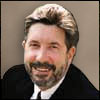 Numismatic research is a never-ending journey full of twists, turns, side-roads, dead-ends, and new discoveries. Much of the fun of numismatic research is that you're not alone: you can utilize the findings of those who have gone before or bring current experts along to help you navigate. The following is a quick run-through of steps involved in research of the undated Templeton Reid $10.
Numismatic research is a never-ending journey full of twists, turns, side-roads, dead-ends, and new discoveries. Much of the fun of numismatic research is that you're not alone: you can utilize the findings of those who have gone before or bring current experts along to help you navigate. The following is a quick run-through of steps involved in research of the undated Templeton Reid $10.
Reviewed census of the three pieces listed in Walter Breen's Complete Encyclopedia of U.S. and Colonial Coins.
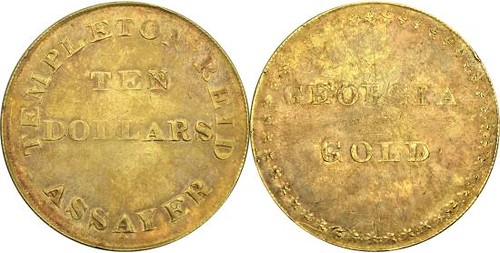
Image courtesy National Numismatic Collection, Smithsonian Institution
Tried to find images off all three examples: the Smithsonian's best piece is plated in Breen; the other Smithsonian piece is illustrated on PCGS CoinFacts; the third piece was missing.
Breen notes that the lesser Smithsonian piece was illustrated in the Redbook from 1947-1970. Pulled a 1969 edition…the coins do not match.
Called David McCarthy at Kagin's to find out what he knew. He's an expert on Territorial gold coins and he agreed with three specimens. Mentioned the Breen/Redbook image conflict and David looked up the 1966 Kreisberg/Schulman sale, where the plate matched the Redbook image exactly. Problem solved. He thinks this coin, the only one in private hands, may have been part of the 1967 Dupont robbery that was never recovered, thus there may be NO examples in private hands anymore. I need to find out if this coin was actually part of the robbery…another side-road.
Called John Dannreuther for his opinion of grades. He and McCarthy agree that the best Smithsonian coin is MS62-ish and Prooflike, and that both the second Smithsonian and the Kresiberg/Schulman examples are/were AU. Reviewed Edgar H. Adams publications concerning Territorial Gold as published on-line at Google Books. No insight there, but I did learn something about the J.S. Ormsby $5…another side-road.
Trying to locate copies of Dr. Dexter Seymour's two works on Templeton Reid coins…apparently, he was Reid's biographer and an expert on his life and coins. Must purchase two different numbers of the American Numismatic Society's Museum Notes.
Finally, I discovered through a Google search that Templeton Reid's parents were Alexander Reid and Elizabeth Sarrazin and that he had two brothers, Collin and Samuel.
The upshot is that we now have corrected/updated pedigrees for all three pieces and we either have or can get images of all three. There are a couple of side-roads to be investigated, as time permits in the future, which I'm sure will be interesting journeys in themselves.
Now, it's on to the next coin and another wild ride!
To read the complete article, see: http://www.pcgsblog.com/ron-guth/news/the-wild-ride-of-numismatic-research (www.pcgsblog.com/ron-guth/news/the-wild-ride-of-numismatic-research)
OSTHEIMER COLLECTION RARITIES OFFERED
NBS members who attended the NBS annual meeting at the 2000 ANA Convention in Philadelphia may recall a presentation by W. David Perkins titled, "The Ostheimers of Philadelphia and their Extraordinary Collection of Silver Dollars." The Ostheimers assembled one of the largest and most complete collections of early U.S. Silver Dollars 1794-1803 by die marriage (Bolender reference numbers).
The Ostheimers purchased from Freeport, Illinois dealer Milferd H. Bolender the early dollar collections of both K. P. Austin and W. G. Baldenhofer (See The Asylum, Volume 25, Number 2, Spring 2007: "Who was Farish Baldenhofer?"), adding rarities along the way including one of the two Lord St. Oswald 1794 silver dollars, Lot 137 in the 1964 Christie, Manson and Woods auction of the Lord St. Oswald Collection.
The Ostheimers collected in many areas, including art, stamps, (William Jennings) Bryan Political Items and Hawaiian tokens. In 1973 Superior Stamp & Coin (Ira and Larry Goldberg) purchased the Ostheimer collection of Bryan Political Items.
What was not well known is that the Ostheimers had one of the largest collections ever of So-Called Dollars (SCDs), with over 700 different H&K numbers (Hibler & Kappen, So-Called Dollars, 1963). They started collecting the SCDs in 1957 which at this time were classified by Kenney numbers (Richard D. Kenney, So-Called Dollars, Coin Collector's Journal, July-August, 1953).
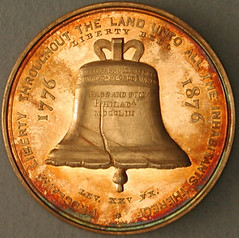
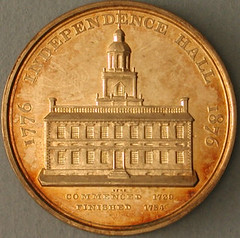
Hibler-Kappen 23
The Ostheimers were contributors to the first edition of the H&K book. They corresponded heavily with Hibler in the early 1960s, prior to the first edition of the H&K book being published. Over 70 of the plate photos in the first edition of the H&K book are from the Ostheimer Collection. Many of these specimens are extremely rare, with some H&K numbers not having been seen in over 50 years! The majority of the SCDs were stored in old Kraft 2X2 envelopes, wrapped in jeweler's tissue and unopened since the 1960s. Some were in their original holders. Eighty-nine specimens from the Ostheimer Collection are plated in the second edition of the H&K book.
Specimens were acquired from a variety of sources, including Harold "Hal" Hibler, a "young" Q. David Bowers of Empire Coin Company, dealer Louis Werner, the Kagin's, Colorado collector and dealer Al Overton (two rare Lesher Dollars), New Netherlands Coin Company / John Ford, Abner Kreisberg and other dealers from this time. The collection includes a number of specimens from Farran Zerbe's personal collection, including a twelve piece set of Bryan Dollars (including two unique specimens not listed in Bryan Money by Fred Shornstein) stored in Zerbe's original envelopes.
For those readers familiar with Tom DeLorey's classic article, "Thomas L. Elder – A Catalogue of His Tokens and Medals" published in The Numismatist, the Ostheimer Collection includes the Continental Currency issues, Wilson Dollars, the rare Taft Dollars and Dickeson Issues.
Fifty select rarities from the Ostheimer Collection are to be offered by specialist Jeff Shevlin in a sealed bid sale at the 2010 Boston ANA, Table 1530. Twenty-five additional rarities will be offered from the Jeff Shevlin Collection. All NBS members and E-Sylum readers are welcome to stop by and view these historical and rare medals.
Photos and lot descriptions can be viewed online prior to the ANA by clicking on this link:
so-calleddollar.com/DollarSite/ForSaleDollars.aspx
?category=220&title=Auctions
Lots will be available for viewing at Table 1530 at the ANA all week up until bidding closes at 5:00PM EST Friday, August 13, 2010. Additional details regarding the sale are available on Jeff Shevlin's website (so-calleddollar.com).
MORE ON BANKNOTES FOR THE BLIND
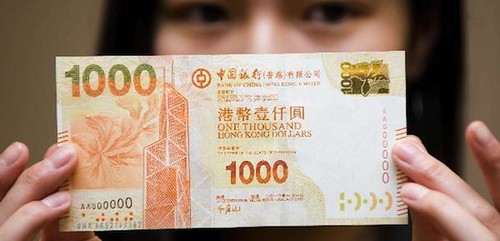
Howard Berlin writes:
In the last E-Sylum you wrote about Hong Kong issuing notes with Braille, following the practice of China, and the Treasury asking for comments for paper money changes for the blind. Attached is a recent article I wrote about "Blind Notes" which appeared in the paper money supplement in the June 7 issue of Coin World.
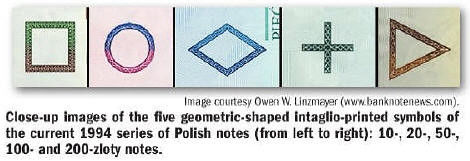
To read the earlier E-Sylum articles, see:
U.S. TREASURY SEEKS COMMENT ON PAPER MONEY CHANGES FOR THE BLIND
(www.coinbooks.org/esylum_v13n30a21.html)
HONG KONG TO ISSUE NEW BANKNOTES WITH BRAILLE
(www.coinbooks.org/esylum_v13n30a22.html)
NOTES FROM E-SYLUM READERS: AUGUST 1, 2010
John Mutch writes:
I just enjoyed another great issue of The E-Sylum - thanks for all you do with it!
The article about the book vending machine reminded me that in 1997 a coffee shop here in Boise, Idaho installed an Art-o-Mat machine - see their web page at http://flyingmcoffee.com/art/artomat for some history on the concept in the USA. I just followed the links on that page to find that there is a whole series of Art-o-Mat YouTube videos on them.
It seems to me that there was some sort of token connection with this set up whereby they used a token rather than coins, but I can't bring that memory back.
Bob Leonard writes:
There are a couple of problems with archaeologist Lou Farrell's account of the discovery of a 1773 Virginia halfpenny in Trappe, PA. First, in one breath he says that the coin "was heavily used," but in the next that Virginia halfpence were hoarded and not spent!
More important, the 1773 Virginia halfpence were not released into circulation until February 27, 1775 (Newman, Coinage for Colonial Virginia, pp. 21-23), while the kitchen find spot where Farrell's coin was found burned down in 1779. This doesn't leave a lot of time for the coin to cross the Mason-Dixon Line and become "heavily used."
Perhaps what Farrell took to be wear really was pitting from burial (the coin is not illustrated), or perhaps he is mistaken as to the terminus ante quem for his excavation.
To read the earlier E-Sylum article, see: PENNSYLVANIA ARCHEOLOGISTS FIND VIRGINIA HALFPENNY (www.coinbooks.org/esylum_v13n30a24.html)
Joe Boling writes:
Dick Johnson talks about an "impending tax on gold coin purchases." There is no such tax. The 1099 requirement just makes cash flows more visible to the IRS - everyone who profits from a sale is already required to disclose and pay taxes (as applicable) on that profit. Nothing will change with the new 1099s except that some people who were hiding their gains will have a harder time doing so (which is the object of the filing requirement). I don't support the new requirement - it's an ungodly burden on both buyers and sellers (I keep reading that sellers will also have to file the forms - what a crock). But there is no new tax on gold.
To read the earlier E-Sylum article, see: NOTES FROM E-SYLUM READERS: JULY 25, 2010 (www.coinbooks.org/esylum_v13n30a18.html)
FACEBOOK AND THE NUMISMATIC BIBLIOMANIA SOCIETY
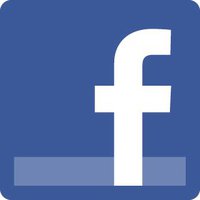 Joe Boling writes:
Joe Boling writes:
I'm on Facebook just to let people know I'm still alive, and give them a way to reach me if they want to. I never read my page to see what other people are doing, and I never post what I'm doing - no time for such diversions. I spend less than ten minutes a day on the site - maybe only five. I go there only when I receive an email originating from there that needs a visit to resolve.
Dave Lange writes:
I too have been asked by a number of worthy persons to be a Facebook friend. I'm not a member of Facebook or any other social networking website (though the E-Sylum serves this purpose for many of us). My reason is similar to that expressed by others in that I simply don't want to take the time away from other, more fulfilling activities.
I spend most of my workday staring into a computer monitor, and my weary eyes can take just so much more of this on my own time. I would rather use a computer to pursue my writing and research interests during off-duty hours than to find out the minutiae of other people's lives.
I will therefore use The E-Sylum as a forum to extend my apologies to the many persons who've requested to be my online "friend." My disinterest in Facebook is certainly no reflection of any disinterest in their friendship. The upcoming ANA convention will provide ample opportunity to confirm this fact.
So there are a couple votes from the "don't use it" to "barely tolerate it" section of the spectrum (like me!). From a more upbeat corner Paul DeMarzio writes:
![]() Facebook has proven to be, for me anyway, a valuable tool for reconnecting with old friends and making new ones who share similar interests. But that's a long discussion ...
Facebook has proven to be, for me anyway, a valuable tool for reconnecting with old friends and making new ones who share similar interests. But that's a long discussion ...
In response to your query in this week's E-Sylum about Facebook APIs, one simpler thing you might consider is establishing a "fan page". It is very simple, easy, quick and free. I've created two of these for local charitable organizations to keep people informed about what we are doing. Here's the link to one of them ... Brotherhood-in-Action (www.facebook.com/pages/Brotherhood-In-Action-of-Bethel/180833031533)
Having a fan page will help spread the word about The E-Sylum and also let you troll a little deeper for new NBS members. Each week you could simply post a link to the new issue when you publish, it would take you just a couple of minutes. You probably would want to check in perhaps a bit more than you do now with your personal page just to see if there have been any comments (although Facebook will send you a weekly report) but even that is not time consuming.
-Bibliomania-Society/144733835552745 .
While I was on the page this afternoon, up popped a chat request from Jim Neiswinter. I recorded the conversation for posterity.
It's no "One small step for man, one giant leap for mankind", but it is an important step. I've wanted to add social network features to the NBS web site for years, but didn't find what I thought was a viable solution. But now we're bringing NBS onto the most-used social platform of the day.
It'll take time to evolve (and we'll need more help with this), but I believe it's a step in the right direction and should be a topic for conversation at the upcoming NBS Board and General meetings at the ANA convention in Boston.
If you happen to be a more regular Facebook user, please take a moment to link up to the fan page. I hope you like us, you really, really like us. With luck, this could eventually be a channel to bring more readers into the fold and further spread the word about numismatic literature, numismatic research, The E-Sylum, and the Numismatic Bibliomania Society.
Thanks, Paul! -Editor
THE BOOK BAZARRE
ORGANIZED CRIME AND THE 500 EURO BANKNOTE
Loren Gatch writes:
As readers of The E-Sylum no doubt remember well, when the rapper Jay-Z flashed 500-euro notes in the movie "American Gangster" (2007), this was taken as a portent of the decline of the dollar as a world currency.
The Wall Street Journal now reports on the growing popularity of the 500-Euro note among the criminal element. Indeed, the newspaper suggests that the seigniorage gains from issue underwrite the viability of the Eurozone project itself.
Given the success of these notes, it is clearly incumbent upon American policymakers to rethink their outdated commitment to Benjamin Franklin!
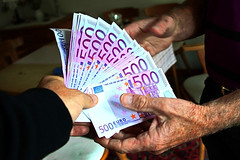 Gangsters, drug dealers and money launderers appear to be playing their part in helping shore up the financial stability of the euro zone.
Gangsters, drug dealers and money launderers appear to be playing their part in helping shore up the financial stability of the euro zone.
That's thanks to their demand, according to European authorities, for high-denomination euro bank notes, in particular the €200 and €500 bills. The European Central Bank issues these notes for a hefty profit that is welcome at a time when its response to the financial crisis has called its financial strength into question.
The high-value bills are increasingly "making the euro the currency of choice for underground and black economies, and for all those who value anonymity in their financial transactions and investments," wrote Willem Buiter, chief economist at Citigroup, in a recent research report. The business of issuing euro notes, produced at almost zero cost, is "wildly profitable" for the ECB, Mr. Buiter wrote.
In recent years, the profits on its issue of new paper currency have been running at €50 billion. In 2008, the year of the Lehman Brothers crisis, it was €80 billion.
Even with conservative assumptions about future growth of currency in circulation—at, say, 4% a year, which is in line with the ECB's 2% inflation target plus a margin for economic growth—Mr. Buiter estimates future seigniorage profits for the central bank between €2 trillion and €6.9 trillion.
Thanks to seigniorage, he says, the ECB is "super solvent."
An ECB spokeswoman says there's no plan to withdraw high-value notes, national equivalents of which were used in six member states before the euro was launched. They will be retained when a redesigned series is issued in coming years.
Replacing them with small denominations would increase production and processing costs, she says.
To read the complete article, see: How Gangsters Are Saving Euro Zone (online.wsj.com/article/SB10001424052748704532204575397543634034112.html)
FEATURED WEB PAGE: THE ROCHESTER NUMISMATIC ASSOCIATION
This week's Featured Web Page is suggested by John and Nancy Wilson, who write:
The Rochester Numismatic Association is one of the oldest coin clubs in America. Here is the site of the RNA which we think the readers of The E-Sylum will enjoy looking at.
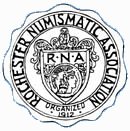
Dr. George P. French is credited as being the founder of the R.N.A. He was a medical doctor who was educated locally and attended the Medical College of the University of Rochester. Dr. French practiced medicine, specializing in "female disorders" and after 24 years was not only successful in his profession but had found time to collect coins, stamps, and curios.
His coin collecting interest was U.S. large cents. In the heart of the Depression, B. Max Mehl, the famous Texas coin dealer, purchased the French collection of large cents for $50,000. French's biographer claimed that the 1793 cents were valued at $5000 each at the time his collection of 832 coppers were sold. His curios included the clothes worn by Tom Thumb and Peter the Great, the world's two smallest men.
www.the-rna.com

